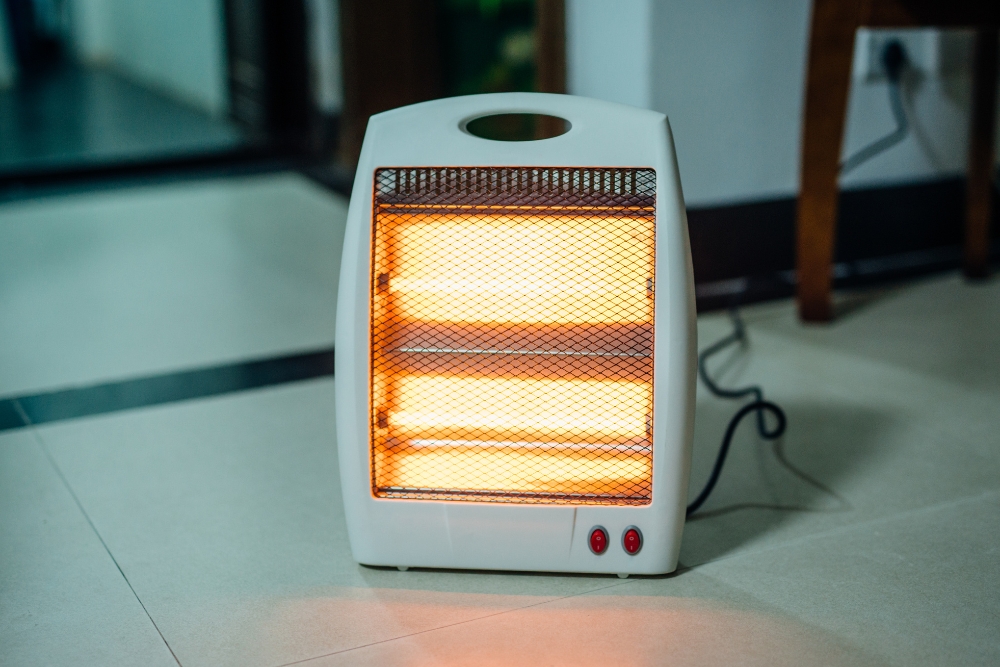Back to Basics: Electric Heater Safety in the Workplace
Back to Basics is an article series that highlights important but possibly overlooked information facilities management professionals should know.
Another winter, another story of electric space heaters being recalled or starting fires. Newer electric heaters include a host of precautionary safety measures, but older models might be carried into your facility by a chilly colleague who is unaware of the risks.

On average, portable electric heaters are linked to 1,700 fires per year, resulting in 70 deaths and 160 injuries annually, according to data from the U.S. Consumer Product Safety Commission data. Still, there are no federal safety rules prohibiting space heaters at a worksite.
Rounding up the latest advice from safety experts, this article will cover the various types of electric heaters and their benefits, overall risks, and how to stay safe every day of the year.
Kinds of Electric Heaters
There are many types of heaters, many of which have different functionality and risks.
Most portable heaters are the riskiest type, using “convection” heating by drawing in cold air at the bottom. The cold air circulates throughout the heater and is warmed with a heating element before shooting out warm air at the top and warming the space around the heater itself.
“Radiant” heaters are panels installed in walls or ceilings. They don’t warm whole rooms but rather the objects directly in their path using radiation energy. They’re considered more efficient than portable heaters because they emit targeted heat.
“Fan-forced” heaters create a more even heat distribution because they use fans to circulate the air. They are more frequently used in smaller spaces where short bursts of heat are needed, like utility spaces, entryways, and bathrooms.
Heater Risks
Heaters of all kinds carry risks. But luckily facility managers that oversee buildings with electric heaters don’t have to worry about the risk of carbon monoxide poisoning from furnaces, fireplaces, or some space heaters—since electric heaters don’t use fuel. Here are some of the other risks inherent in using electric heaters in facilities.
Hyperthermia
Space heaters can get up to 600 degrees Fahrenheit and cause hyperthermia, or overheating, that may result in death. This can be particularly a risk for children, people with disabilities, and senior citizens who may have slower reaction times to temperature.
Fire
Since electrical heaters use a significant amount of electrical current, plugging a heater into a power strip or extension cord with other appliances may overload the wiring and cause it to overheat, which is more likely to start a fire. Heaters that run for too long and have plastic parts can break down and ignite.
Electrical Shocks
Electric heaters in damp places like basements or bathrooms are not recommended for several reasons: High humidity creates condensation that can use up more electricity, humidity can destroy your device, and most importantly, it can cause electrical shocks.
Now that you’re aware of the risks, there are many steps you can take to avoid them.
Top Safety & Maintenance Tips
There are a lot of considerations to make when installing or placing an electric heater in your facility.
First and foremost, if you manage a business facility, implement a policy requiring employees to seek permission from a supervisor or facilities manager to bring a portable space heater to work and have a plan in place to ensure the heater is safe and compliant before use.
Once they get the OK, here are a few overall tips. Before using any electric heater, read the manufacturer’s instructions and warning labels carefully and look for a label showing that it is listed by a recognized testing laboratory. Also, take a moment to ensure that any electrical outlet you use can handle the wattage of the heater and is properly grounded. Grounded outlets usually have two vertical slots and a third prong for the ground wire that allows electricity to travel safely away if a power surge or short circuit happens.
Electric heater safety requires diligence and regular commitments to inspecting the equipment and the environment around the heater.
Everyday Safety Checks
Here are some everyday must-dos:
- Each time you use a portable space heater, look for any loose connections, broken plugs, or frayed or worn cords. Don’t use them if you see these signs.
- Do not place heaters on unstable footing, on furniture, or in high-traffic areas.
- Cords that are connected to heaters may also generate a lot of heat, so objects—especially flammable objects—should be at least three feet away from heaters and their cords to avoid fire risk. Electric Safety Foundation International has detailed information on extension cord safety and amperage limits. When the heater is on, check if the cord, plug, or outlet feels hot. If so, turn it off and unplug it to let it cool off.
- For portable space heaters, if leaving the room, turn off and unplug the heater beforehand. This is especially the case in confined spaces with pets, children, elderly, and disabled people.
- Make sure you give your heaters and cords a break. Avoid running heaters for an extended period of time, especially portable space heaters.
- Never use extension cords, but if you must, the power rating on the cord must be compatible with the same wattage of the heater or higher. Never plug in other appliances at the same time as the heater. If you must use an extension cord, use one that is as short as possible, heavy-duty, and has a 14-gauge wire or larger.
Regular To-Dos
About every two weeks, inspect and clean your heaters. Remove dust and lint from around the heater using a soft, clean cloth gently, and replace blocked filters with clean ones to prevent heater failures and fires. Low-lying heaters or heaters in the wall may generate more dust, so be sure they’re attended to. For radiant heaters, you can vacuum around the heater openings.
Also, regularly check to ensure that your smoke and carbon monoxide detectors are working.
Every year, make sure you get your heating system checked out by a qualified electrician.
Safety Features to Look for in Electric Heaters
Electric heater manufacturers have created more safety features on newer models. Aside from seeking out new heaters that are certified with the latest safety standards, here are some of the newer safety standards and features to look for when reviewing the safety of older heaters.
Automatic cut-off devices: Newer models of portable electric heaters protect against fires caused by the device toppling over with automatic cut-off devices and more guarding around heating coils.
Built-in thermostats: In newer models, built-in thermostats can warn you when a unit is overheating.
Appliance leakage current interrupter (ALCI): Consumer Reports recommends purchasing heaters with an ALCI plug. Although most space heaters don’t have ALCI plugs, which are bulkier, the plugs protect against electrical shocks and differences in currents.
Worst-Case Scenario Planning
Having a worst-case scenario plan in mind will give facilities managers peace of mind.
Make sure you have an up-to-date insurance plan that covers your facility from any damages related to fire and, of course, a fire and emergency evacuation plan. Keep a fire extinguisher near each space heater, and consider fire safety posters on the walls to remind employees of measures they can take to stay safe.
Now that you’re up-to-date with electric heater safety, cross-check your policies and procedures with this article and keep your buildings and personnel away from harm this winter.
Ali Hickerson is a freelance journalist, content writer, and strategist based in Brooklyn, N.Y. Outside of Facilities Management Advisor, Ali’s recent bylines on health and workplace issues have crisscrossed the country and helped advocate for programs and policies that work to create a healthier, more humane, and equitable world.
The post Back to Basics: Electric Heater Safety in the Workplace appeared first on Facilities Management Advisor.
